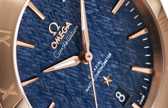

Last year, Seiko announced an entire re-vamp of their much-loved Seiko 5 line up. An entry-level staple and certainly a 101 class in mechanical watch ownership, the
Seiko 5 had long represented a cornerstone in the foundation of Seiko’s enthusiast-focused offerings. But, as nothing lasts forever, in announcing the new Seiko 5,
Interestingly enough, this is not the only enthusiast icon that Seiko recently sent to live on a farm in the countryside. What first was a rumor on the forums later
became known more widely: Seiko is discontinuing the production of the legitimately iconic SKX007 (and its many siblings).
I recently shared the story of my first watch, and while that humble little Timex did indeed kick off my interest in watches – like the endless stream of
"entertaining" comic book movies every one assures me I should love – there is yet another chapter in my origin story. It's a story that leads to many many Seikos,
but like many of you, it started with one true enthusiast-loved model – the SKX007.
At this point, you may be wondering, “Why is he talking so much about the Seiko SKX? I thought this was a review of the new Seiko 5s”. Well, to my mind, you can’t
understand the new Seiko 5s without understanding both the old Seiko 5s and their more dive-focused relative, the SKX007 (for simplicity I’m going to keep saying the
SKX007, but this could be largely interchangeable with many of the other versions – more on that in a bit).
In creating a something of a new formula for the 2019 Seiko 5s, aka the SRPD Seiko 5s, Seiko had to ensure they paid some favor to the enthusiasts that had long been
telling their friends to buy SNKs and SKXs, and you can see elements of both in the new Seiko 5 design. The brief is still very much a Seiko 5, but the look is just a
skootch off of the SKX007. Let’s dig in.
Starting with the Seiko 5, the line was originally launched in 1963 and was meant to offer value-driven everyday watches that were sport ready along with an excellent
entry point into the Seiko line up, which by that time - in Japan, at least - included everything from the Seiko 5 all the way to Grand Seiko (which launched in 1960
with the gorgeous 3180-powered J14070).
https://www.watchesaustralia.co/
Furthermore, while I’m sure that many of you have owned (or at least read about) the Seiko 5, did you know that the "5" stands for something? True to the specific and
focused way in which Seiko produces watches, the "5" is in reference to five base qualities that should be offered by any Seiko 5 watch. These include automatic
winding, a day and date display, water resistance, a protected/recessed crown, and a durable case and bracelet. That feels like a recipe for an excellent and reliable
sports watch and, from the Speed Timer of 1969 to perennial favorites like the SNXS77, the SNK381, or the truly wonderful SNK803 (or any SNK80x), Seiko 5 became
synonymous with entry-level mechanical watches that didn’t skimp where it counts. Go ahead, Google Seiko 5 and see how often one (or several) pop up in listicles for
the best watches under a given price. This is with plenty of good reason, as you can still snag an SNK803 for less than $100.
Long story short, the legacy of Seiko 5 is as the Mediterranean or Baltic Ave in the Monopoly of watch enthusiasm. They aren’t expensive or flashy, but the value
statement is pure Seiko and they offer a foundational building block for any value-hungry collector or buyer.
Connective Tissue
Likewise, while representing a step up from the brand's most entry-level line, the SKX line of watches is something a bit more sport specific. While the "SKX"
nomenclature is an umbrella that includes watches outside the scope of this post (like the classic SKX779 "Black Monster"), when most Seiko-nerds say "SKX" they are
referring to watches like the SKX007, the SKZX009 (blue/red bezel), the SKX011 (orange dial), the SKX013 (37mm version of SKX007), or the SKX173 (the US market variant
with a slightly different dial design). Regardless of the variants, the base unit of this design, and its formidable presence in the watch community, is the SKX007.
With a black dial surrounded by a 42.5mm steel case (46mm lug to lug and 13.25mm thick), a unidirectional dive bezel (with a luminous pip), screw-down crown, and 200
meters of water resistance, the SKX007 is a true tool dive watch. I’ve had mine for more than 10 years (I thought it less while recording the video, but I am getting
old, see the below image – the first I ever made on a DLSR). It was my first proper mechanical watch, my first legit dive watch, and it represented my in-road not
into watch appreciation, but rather into the ranks of the watch nerd (following untold hours on Poor Man’s Watch Forum and WatchUSeek, to make sure I wasn't off the
mark).
Over the past decade (plus), my SKX007 has been with me through a lot. Endless adventures, my PADI certification, and endless jobs around North America and Europe. It
is the sort of watch that becomes a companion, nice enough to feel like you have a few things going for you, but not so nice that you feel the need to take it off when
the going gets tough. I’ve worn my SKX007 on the included (and very jangly) jubilee bracelet, a Seiko Z22 rubber strap, an Isofrane rubber, a cadre of leather
options, and of course, NATOs. A few years back, knowing that dive duty could go to a handful of other watches, I installed a Yobokies 12-hour steel bezel insert,
which made my SKX007 both much more useful and much more me. Here it is running double-duty in London in the fall of last year: